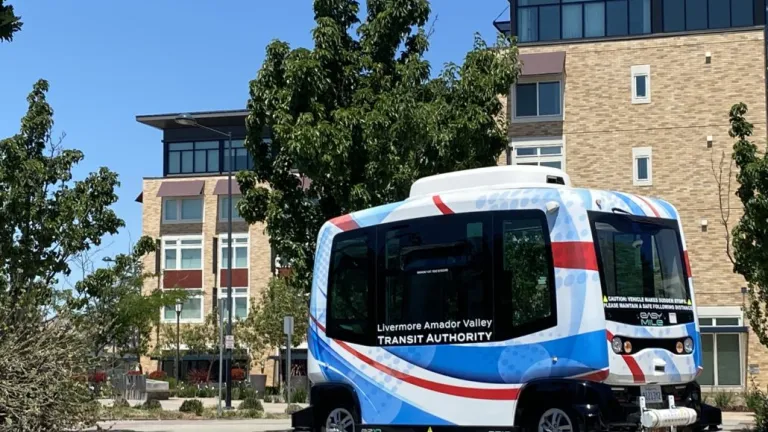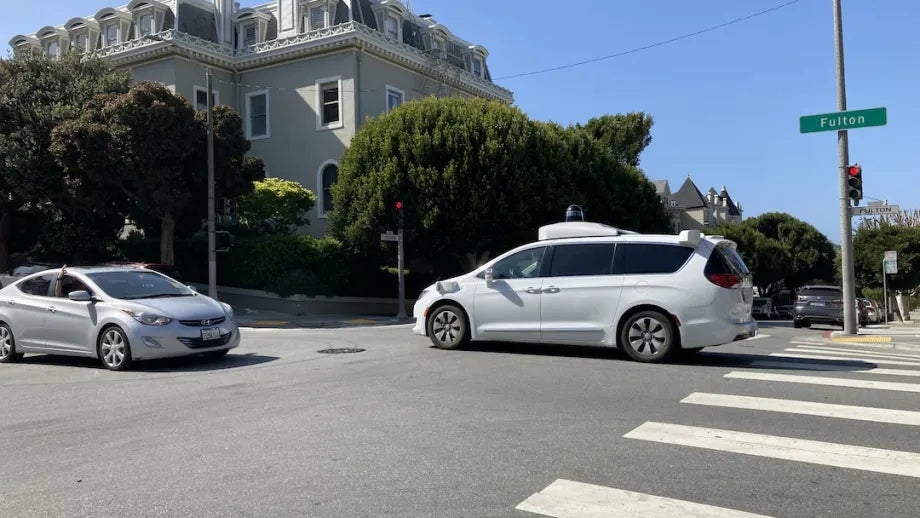Connected & Automated Vehicles
A future that includes automated, connected vehicles is a future with safer streets and fewer collisions. MTC’s programs are a part of this vision.
In the not-too-distant future, vehicles will communicate autonomously with other vehicles (autos, trucks, buses and trains), with pedestrians and bicyclists using mobile devices, and with roadside infrastructure (traffic signals, dynamic message signs and closed-circuit cameras).
Wirelessly networked vehicles have the potential to transform the way we travel — and to prevent collisions.
Connected vehicles technology includes:
- Wireless connectivity between vehicles, roadside infrastructure and mobile devices (e.g., smart phones)
- Safety warnings that alert drivers and automated driving systems of potentially dangerous conditions before the driver is aware of them
Connected vehicles communicate with each other, so every vehicle on the road would be aware of where other nearby vehicles are. Drivers and automated driving systems would receive in-vehicle alerts of dangerous situations, such as someone about to run a red light, an oncoming car or someone swerving into their lane to avoid an object on the road.
MTC’s IDEA SAV technical assistance grant program will fund pilot projects to bring shared automated vehicles service to communities and riders who need it most.

Using 5.9GHz communications or other forms of wireless connectivity (such as 5G, LTE or wifi), connected vehicle technologies include Vehicle-to-Vehicle (V2V), Vehicle-to-Infrastructure (V2I) or Vehicle-to-Everything (V2X) messages.
Federal, state and local agencies around the world are working with the private sector companies (e.g., original equipment manufacturers/automakers, equipment suppliers, technology and telecom), and academic and research institutions to develop and deploy connected vehicle technologies that can provide safety, mobility, operational and environmental benefits to the public.

